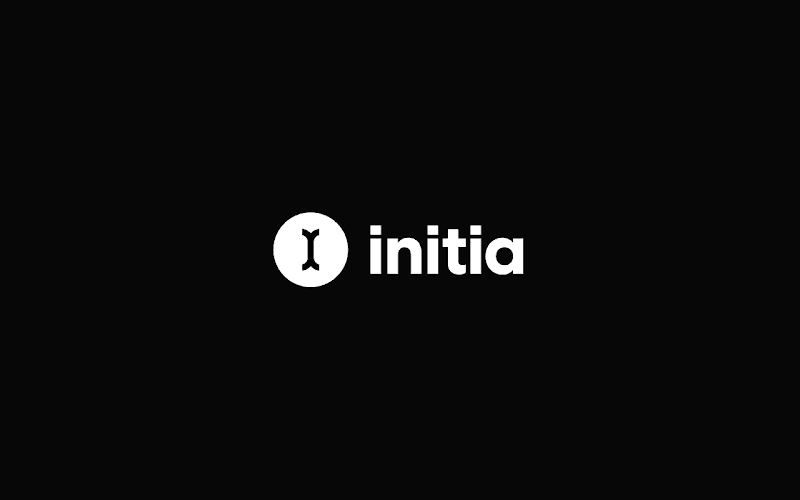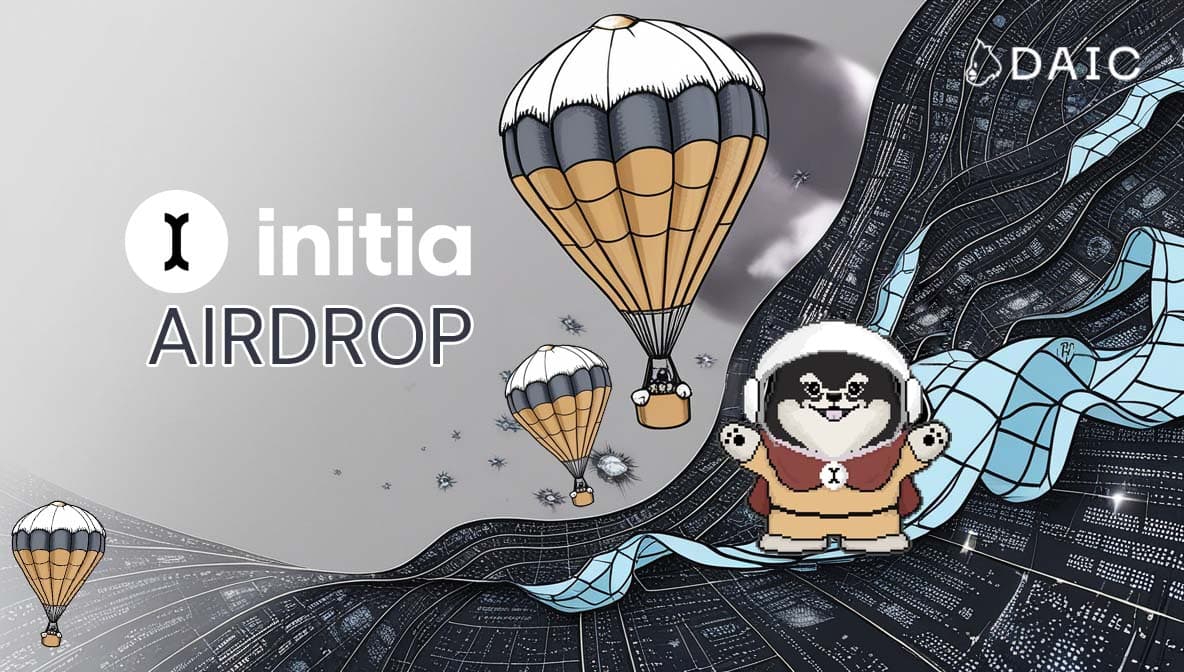Key Takeaways
- Cosmos-Based Rollups: Initia utilizes a Cosmos Layer 1 platform to deploy scalable Layer 2 rollups called "Minitias," compatible with EVM, MoveVM, and WasmVM.
- Modular Architecture: Designed for interwoven rollups, Initia allows seamless cross-chain asset transfers and interoperability.
- Optimistic Rollups: Initia’s OPinit Stack enables customizable optimistic rollups with fraud proofs and rollbacks.
- Developer Flexibility: Supports multiple virtual machines, allowing developers to build tailored appchains.
- Ecosystem Growth: Backed by Binance Labs and other major investors, with a strong roadmap for mainnet in 2024.
Introduction to Initia’s L1 and L2 Platforms
Although the complexities of the Initia project are significantly more nuanced and possess additional components, in its simplest form, Initia is a Cosmos-based platform that consists of several main elements collectively known as Omnitia, with the most important of these being:
- Initia Layer 1: The Initia L1 is the base blockchain layer and orchestration layer used to coordinate network security, consensus, interoperability, governance, liquidity, and cross-chain messaging within the greater Omnitia network.
- Minitia Layer 2 rollups: Minitia, or mini Initia’s, are L2 rollup protocols deployed via the Initia base chain. Minitia’s are custom-tailored Cosmos SDK rollups that are virtual machine agnostic, meaning they can be EVM-, WasmVM-, or MoveVM-compatible.
Initia as an IBC-enabled Move Cosmos SDK Layer 1
Now that we have distinguished the differences between Initia and Minitia’s, let’s explain more about the how the platform works:
The Initia L1 is a modular Cosmos blockchain that integrates a Layer 2 application specific infrastructure set as a means to create a network of interwoven rollups.
Initia was designed to rebuild multichain networks from end-to-end to address the many challenges both users and developers face when building their own blockchains.
In addition, the Initia L1 was built to address the shortcomings often seen in today's fragmented rollup and modular systems. As noted above, Initia often refers to their L1 as the orchestration Layer, a specific L1 built to weave and connect all L2’s (Minitia’s) on Initia together.
Initia is designed to provide development teams building appchains the most flexible and simple way to build unique, sovereign, and scalable rollups while specifically eliminating the UX challenges developers and users typically face during app chain development.
Initia’s mission is to rebuild the entire tech stack by optimizing for the modular app-chain future. From a L1 Orchestration Layer, to L2 implementations, rollup frameworks, and more, Initia continues to work on the development of a far-reaching and ever-evolving paradigm for blockchains.
This architectural ownership of the multi-chain stack enables Initia to make certain trade-offs within the system that optimizes the platform for flexibility and scalability.
Initia is a network designed for highly interwoven modular rollups, allowing developers to build scalable sovereign systems while abstracting away the complexities and fragmentation that typical multichain modular architectures exhibit.
Find out more about the technical architecture behind Initia in our blog post “Initia (INIT): Unpacking Initia’s Technical Architecture”.
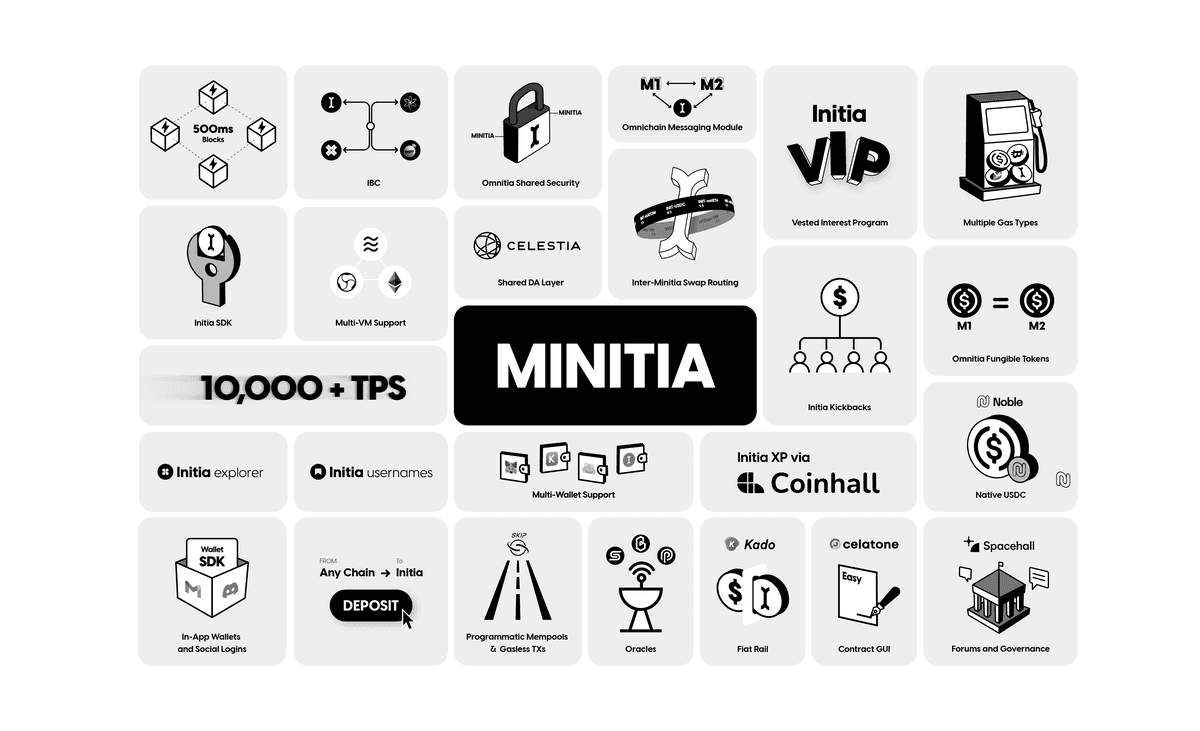
Initia refers to the term interwoven to describe how each Layer 2 on the network has complete access to onboard users and assets from any other blockchains in a seamless and user-friendly manner. Across Initia’s multi-chain system, tokens and NFTs are fungible, meaning it's not possible to see various types of the same token across the network.
Initia makes use of optimistic rollups (ORs) that are fully customizable depending on the intended on-chain deployment. Initia’s OR framework is called the OPinit Stack and is built entirely with the Cosmos SDK.
The OPinit Stack comes out-of-box with fraud proofs and rollbacks, which many L2 networks have not enabled as of yet. Because the OPinit Stack is built in Cosmos SDK, it is VM-agnostic, allowing teams to launch fully-fledged Cosmos SDK-based L2s on the network in the various Initia VM frameworks the platform enables.
Initia’s rollup framework allows the development of Cosmos SDK app-chains like Osmosis, Hyperliquid, dYdX v4, and others without the need for validator sets or the requirement to implement complex chain-level infrastructure - which typically represent the largest barriers for app-chain development teams.
This allows independent dApps, protocols, and rollups building on Initia to custom-tailor their own economic framework and user experience set for a vast number of uses, while provisioning a wide array of features such as native stablecoin deployment, multichain bridging, ecosystem-wide asset fungibility, programmable gas fee transaction models, and account abstraction.
This interoperability-focused design is the key foundational paradigm that many feel will make Initia successful long-term.
Initia Cross-Chain and Development Interoperability
Initia innovates at numerous levels. To start off, it is one of the very first Cosmos-enabled Layer 1 blockchains that integrates the Move Virtual Machine (MoveVM) and Move programming language into its architecture.
For those unfamiliar, Move was initially conceptualized by the blockchain development team behind Facebook Libra (which later became Facebook Diem).
After numerous efforts between 2019 and 2022, Diem was unable to launch for a variety of reasons, including a host of regulatory roadblocks pertaining to its potential stablecoin that would have integrated with Facebook, Instagram, and WhatsApp for in-app messaging payments and more.
That said, the team behind Diem was so large and the tech of such extreme quality, that several chains based on Diem’s technology later launched as their own independent Layer 1 blockchains with their own cryptocurrencies. The most notable of these are industry-leaders Aptos and Sui.
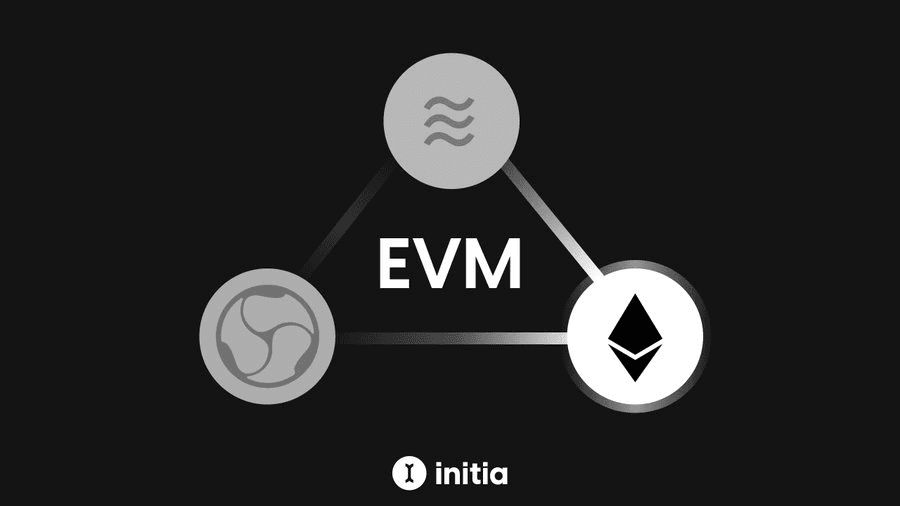
Initia’s Move compatibility is significant because it allows for simplified, accurate, and highly secure application and smart contract development when compared to most widely used blockchain languages. Because of this design choice, Initia helps ensure the integrity and security of its Layer 1 platform long-term.
In addition, the network also allows Layer 2s to build Solidity and WebAssembly smart contracts highlighting its EVM and WasmVM compatibility, vastly improving the network’s developer interoperability. This means L2 application developers can modify the parameters of their rollup on the Cosmos SDK side, while also selecting EVM, MoveVM, or WasmVM compatibility on top, depending on which VM or smart contracting language best suits their needs.
This innovation also allows for the seamless messaging and bridging of assets (and different data types) between various ecosystems, allowing assets to be sent between EVM, WASM, or MoveVM Layer 2s while using IBC between networks. Therefore, many feel Initia’s interwoven chain-agnostic VM interoperability design will help solve much of the fragmentation we see across modular networks at this time.
This infrastructure allows economic incentives to be seamlessly incorporated throughout the entire larger Initia ecosystem of Layer 2 networks.
Initia History and Background
The Initia platform was founded by computer science experts Zon and Stan and numerous additional blockchain protocol architects.
To provide more context, Stan studied mathematics at Princeton and spent several years working in quantitative trading and analysis at various firms in the sector. On the other hand, Zon studied computer science and business at the University of Pennsylvania prior to working as a software engineer with various Web2 startups prior to diving headfirst into blockchain and crypto.
After a short time in Web3, both Zon and Stan became well-respected engineers with Terraform Labs during Terra’s heyday. Recall that Terraform Labs was the entity behind the Cosmos-based Terra blockchain and its proprietary UST stablecoin. At that time, Zon was a smart contract developer, while Stan focused on MEV research.
After leaving Terraform, Stan and Zon began conceptualizing their own Cosmos-enabled DeFi blockchain. Unfortunately, it wasn’t long after their departure that the entire Terra and Luna ecosystem collapsed in May of 2022.
This resulted in the developers ceasing their initial fundraise and returning all funds to investors because the market sentiment was so negative they felt it was in their best interest to hold off until sentiment dramatically improved.
During the bear market, the duo spent the time needed to determine the focus of their next venture, while considering numerous pain points within the current blockchain landscape. Shortly thereafter, they began the development of the Initia project and hired several core developers to help them bring about their vision for modular interwoven rollups.
As of this writing, the Initia team is made up of approximately 30 members, with much of the team operating out of Singapore. The team comes from a variety of backgrounds including core devs with years of experience in Cosmos and Ethereum, those that previously worked in quant finance in NYC, prior developers at AAA gaming studios, researchers, and software engineers from FAANG companies.
With developers that have been building on Cosmos since before smart contracts even existed within the network, many are betting on Initia to succeed long-term because of its extremely experienced and high caliber developer team.
Of great significance, in October 2023, Initia emerged from stealth mode to announce they had finalized a pre-seed funding round through crypto behemoth Binance Labs for an undisclosed sum.
As always, Binance is more than willing to support hardcore builders along their development paths should they be deemed necessary suitors for capital allocation. Because of Initia’s multi-language developer flexibility and interwoven rollup deployment capabilities, Binance sees the project as a means to enable Web2 developers to build their iterations within the burgeoning Web3 and blockchain space.
The Binance partnership and subsequent funding round has helped Initia establish many critical partnerships with a host of important players in the Web 3 arena, notably Binance Labs portfolio companies and top global mobile game publishers.
The funds raised from the Binance pre-seed round will support the development of Initia’s infrastructure, the expansion of critical product tooling systems, and the incubation of pivotal application layer projects building on top of the Initia network.
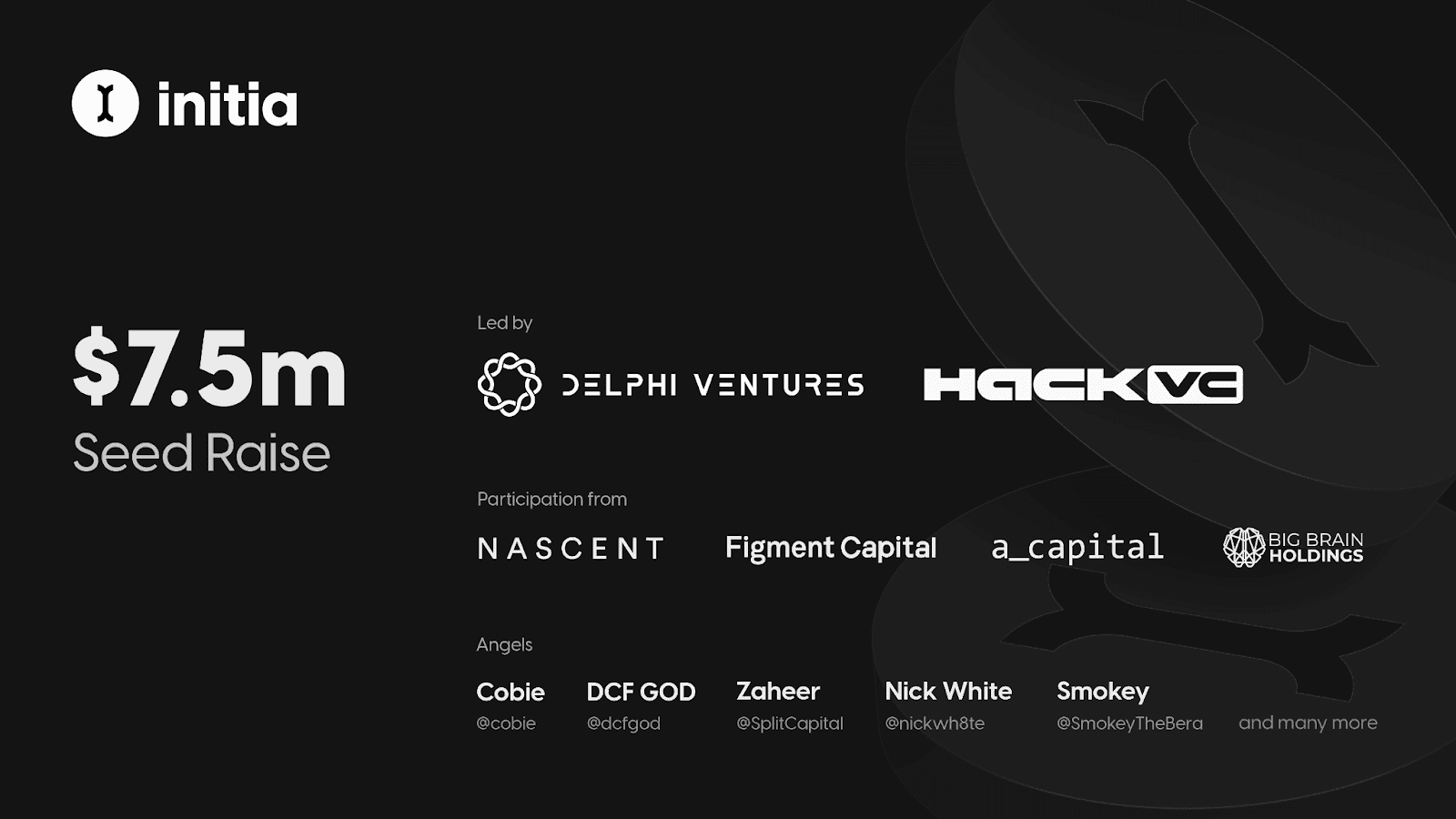
As evidenced by their participation in Initia’s seed round, VC supporters Delphi Ventures (the investment arm of Delphi Digital) and Hack VC also see Initia as a game-changing solution to many of the current inefficiencies in blockchain.
Case and point, founding partner of Delphi Ventures Jose Maria Macedo notes that: “We’ve long been believers in the app-chain thesis, and interwoven rollups are the next natural evolution of that. Initia is built from the ground up to mitigate the frictions and fragmentation of app-specific environments, while optimizing both dev and user experience. With their deep experience in Cosmos, there isn’t a better team in the world to build this and we couldn’t be more excited to back them on this journey.”
In addition, co-founder of Hack VC Alexander Pack summarizes his excitement with the investment in Initia as follows: “At Hack VC, we’re focused on backing infrastructure that radically improves the experience of blockchain developers. We believe that Initia’s vision for interwoven rollups fits this perfectly, as they solve many of the hard fragmentation and middleware problems that rollup developers historically have had to wrestle with. The Initia team is one of the fastest shipping and most thoughtful teams that we’ve had the pleasure of supporting, so we could not be more confident that this is the right team to set the bar on how app-chains should be launched in the future.”
It seems inevitable that the project will eventually receive additional capital from investors. While it's too early to speculate, this could come in the form of Series A, Series B, and Series C funding rounds, but may only include a final single round as mainnet launch approaches.
The Initia team is aiming to launch their mainnet in Q3 of 2024 and has been optimizing their closed testnet throughout the past several months. The next step is the launch of their incentivized testnet, which recently launched in mid May as a means to incentivize early ecosystem contributors and test the platform prior to mainnet.
Initia as a Solution to Rollup Framework Inefficiencies
Initia is built to be an interoperable, scalable, and secure interwoven rollup (also called appchains or Minitia L2s) deployment and customization framework capable of launching blockchains designed for different uses with different economic structures, consensus mechanisms, validator sets, language types, application logic, tooling systems, and more.
As a specific example, although Optimism’s OP stack is an ingenious solution to optimistic rollup creation and Ethereum app chain deployment, it does have some issues. The OP stack model still largely reflects the problems that rollups experience when deployed within the Cosmos ecosystem. Thankfully, Initia is built to solve many of these challenges.
More specifically, the Initia framework allows for fungibility between Cosmos optimistic rollups without relying on support from third-party service providers. Typically, new optimistic rollups on Optimism are reliant on instant bridge providers, third-party oracles, and only possess EVM compatibility.
Because of its modular design, Initia is able to allow for the creation of fully customizable app chains (optimistic rollups) that are able to retrofit different types of components for their intended use and market focus. This design allows Initia applications to become extremely powerful and simple to build, rather than just being focused on the smart contract layer.
This design also greatly increases performance for the chains building on top of its network, exponentially increasing optimistic rollup (as appchains) scalability via a separate transaction execution framework. This means the Initia implementation is designed to be as lightweight as possible, while dramatically simplifying developer and user experience concurrently.
One can imagine an Initia Layer 2 as an entire Cosmos SDK-based chain with the addition of specific modules to replace consensus with the OPinit Stack. This means Initia rollups have the same flexibility of building a Cosmos SDK chain. Cosmos SDK has been the most powerful and flexible stack to build unique blockchains as is evidenced by the continued success of the likes of dYdX V4, Hyperliquid, Berachain, Osmosis, and others.
Now with the upcoming launch of Initia’s rollup stack, blockchain development teams are able to launch projects similar to those noted above in a much simpler manner, given it is no longer necessary to deploy independent validator sets for each individualized chain.
Not only as it relates to OP stack, the above design characteristics offer a strong alternative for developers that encounter compatibility or feature-deployment issues with other rollup frameworks such as Polygon CDK, Arbitrium Orbit, Dymension, Caldera, AltLayer, and others.
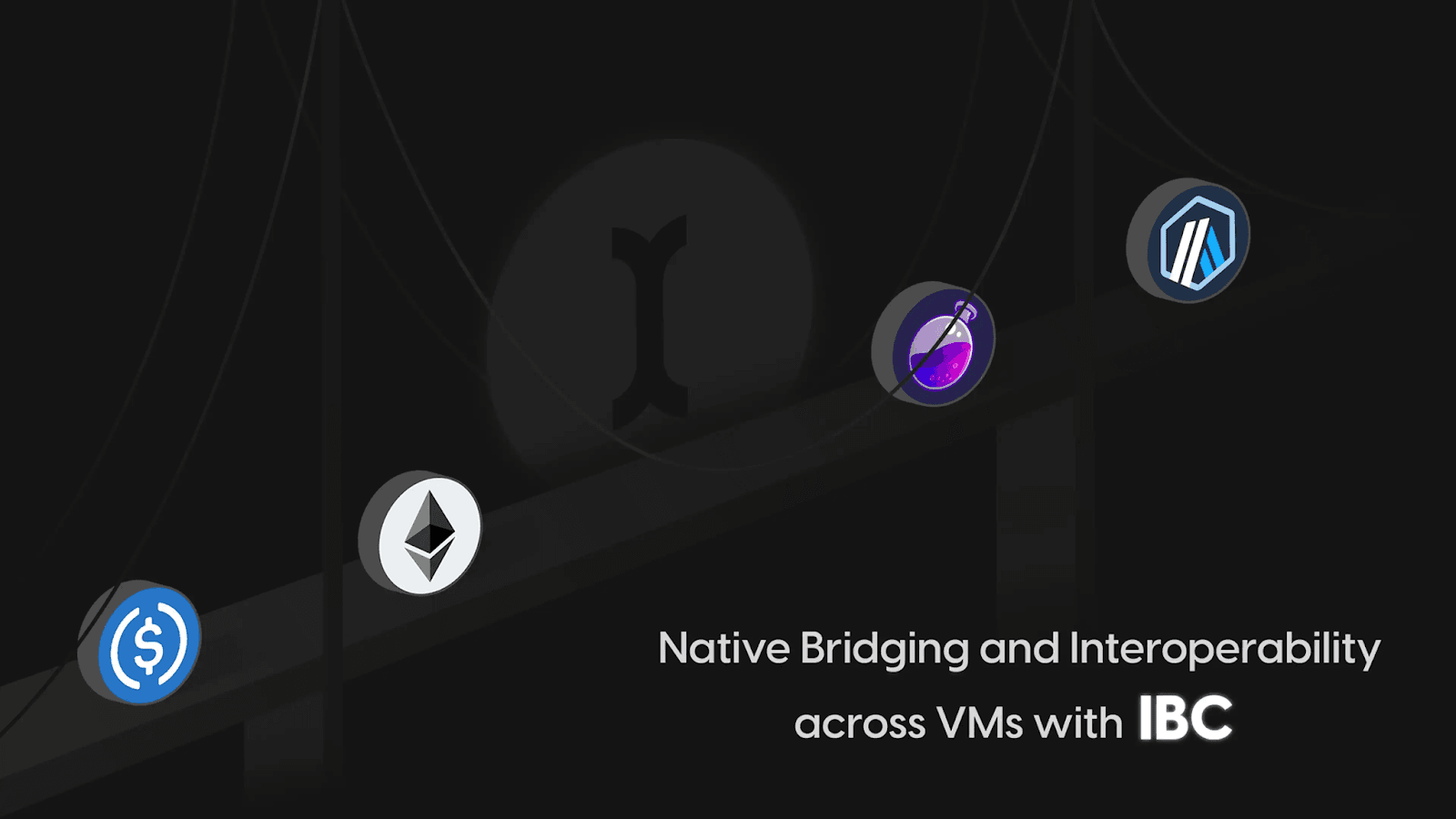
Initia Protocol Features
As is evidenced by its Cosmos-enabled design, Initia is fully IBC-compatible, meaning its Cosmos-focused out-of-box.
Initia chose to build on Cosmos because of the adaptability of the Cosmos SDK as evidenced by its long standing battle-tested environment and highly scalable interoperable design. Instead of another rollup design such as zk-rollups, or others, Initia chose to leverage optimistic rollups because of their efficiency and scalability when compared to most traditional blockchain models.
For those unfamiliar, optimistic rollups employ a mechanism that bundles several transactions together within each individual block prior to submitting them to the mainchain. These transactions are then verified by the mainchain’s network validators. In the event a dispute is present, the transactions are then submitted to a dispute layer for resolution.
This design allows Initia to process transactions significantly faster than most blockchains, garnering transaction speeds of up to 10,000 transactions per second (TPS).
Because of Initia’s optimistic rollup-specific design, transactions on Initia must only be verified once on the mainchain, resulting in a dApp development environment that is significantly more efficient than many environments provided by traditional chains and many zk-rollup-enabled iterations. This means that Initia dApps possess increased scalability and reduced fee structure.
In addition to its efficiency and scalability improvements, Initia harnesses several key design characteristics. These include:
- Security: By leveraging sharding, fraud proofs, decentralized governance, and other innovations, Initia is designed to operate in an inherently secure environment.
- Interoperability: The Initia platform is built to be fully interoperable with Ethereum, Cosmos IBC, MoveVM, and WebAssembly development environments, greatly increasing application and development interconnectivity with a wide range of blockchain types.
- Modularity: Initia is built to be modular and extensible, providing a fully adaptable environment for dApp and protocol deployment and use-case specific chain creation, allowing for a vast range of features to be added, dramatically increasing chain functionality out-of-box.
- Liquidity: Initia uses a system built into the Layer 1 called Enshrined Liquidity. The Initia L1 leverages the InitiaDEX and iterates on traditional PoS security models by enabling whitelisted INIT-X token pairs to be staked directly with validators to provide accessible liquidity for the larger Initia ecosystem, secure the network, and act as an inter-L2 router (allowing for the sending of USDC from one rollup, which is then received as ETH on another).
Initia Use Cases
Because Initia is built to be highly adaptable and modular, the protocol allows for the development of optimistic rollup app chains of many instances. This means the platform is able to provision a host of solutions for a wide range of real-world applications, including:
- Decentralized finance - like most chains, Initia is positioned as a network capable of supporting a vast range of DeFi protocols and applications including specialized wallets, decentralized money markets, decentralized exchanges (DEXs), lending and borrowing platforms, perpetual futures exchanges, restaking protocols, and more.
- NFTs, gaming, and game finance - because of its scalability, security, and adaptability, Initia is a strong environment for the development of a host of Web3 gaming iterations, including those connected to NFT marketplaces and in-game gaming economies.
- Privacy-preservation - in many respects, privacy is an underserved human right. Blockchain platforms like Initia have strong potential applicability in numerous types of zero-knowledge and related privacy utilities for a significant range of uses.
- Payments rollups, such as those provisioned by platforms like Initia, have potential applications in a vast range of payment systems (whether enterprise or retail) and remittance landscapes.
- Enterprise systems although the Initia platform itself is not enterprise focused per se, along with some of the app chain rollups deploying on the platform, it could have numerous applications for enterprise or government systems in numerous sectors moving forward.
- Social media - Initia has potential applications for the development of new and innovative social media platforms because of its decentralized, interoperable, highly scalable, and security-focused design.
Resources
The information provided by DAIC, including but not limited to research, analysis, data, or other content, is offered solely for informational purposes and does not constitute investment advice, financial advice, trading advice, or any other type of advice. DAIC does not recommend the purchase, sale, or holding of any cryptocurrency or other investment.
